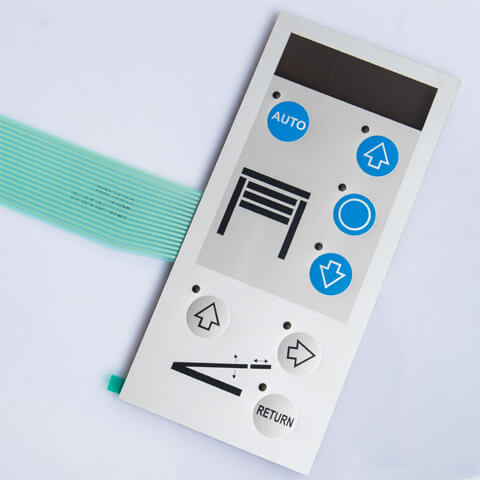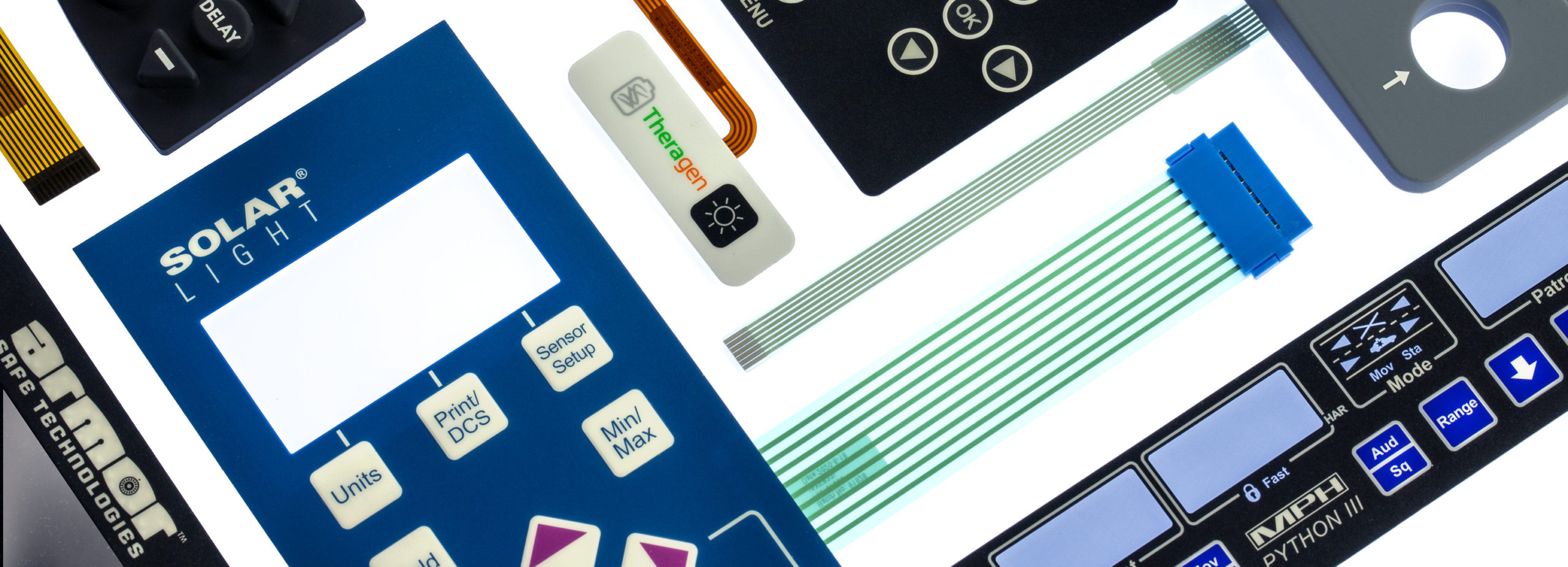Why Membrane Switches Are Crucial for Resilient Control Solution
Membrane switches play a crucial function in guaranteeing the resilience and dependability of control systems throughout different industries. Their distinct construction allows them to sustain difficult ecological variables such as moisture, temperature level extremes, and physical wear. This resilience not just expands the life-span of the systems they serve yet likewise reduces upkeep demands. As we discover the diverse advantages of membrane switches, it comes to be apparent that their value transcends simple functionality, influencing customer experience and functional efficiency. What more effects do these features hold for the future of control system layout?
Overview of Membrane Switches
Membrane layer buttons are functional and reliable components typically made use of in various digital control systems. The graphic overlay offers both practical and aesthetic style, while the spacer layer makes certain that the switches are turned on just when pressed.
Membrane layer switches are frequently favored in applications needing a small and light-weight layout, making them perfect for portable devices, medical tools, and industrial equipment. They can be personalized to satisfy certain individual demands and can integrate numerous functions such as backlighting, tactile comments, and numerous colors. Additionally, membrane layer buttons are resistant to dust, wetness, and contaminants, making them ideal for environments where toughness is important.
Benefits of Resilience
In many applications, the toughness of membrane layer changes offers substantial advantages that improve their total efficiency and integrity. These buttons are created to endure rough environments, making them suitable for use in requiring problems such as high moisture, severe temperature levels, and direct exposure to chemicals. Their durable construction helps to avoid damages from physical impact, making certain durable capability and decreasing the requirement for constant replacements.
In addition, membrane buttons are resistant to deterioration, which is crucial in applications where frequent interaction takes place. This resilience equates to decrease maintenance prices, as companies take advantage of decreased downtime and less service disruptions. Furthermore, the encapsulated design of membrane switches shields internal components from dust and moisture access, further adding to their life-span.
Another benefit is their capability to keep constant efficiency over time. With a high tolerance for mechanical stress, these switches preserve their responsive feedback and electrical stability, ensuring individual contentment. Ultimately, the longevity of membrane switches over not only improves functional efficiency yet also cultivates confidence in their reliability, making them a recommended option for control systems throughout various industries.
Applications in Different Industries
Long lasting control systems utilizing membrane buttons find extensive applications throughout a range of sectors, each gaining from the special attributes these switches supply. In the clinical field, membrane layer switches are essential for tools such as patient displays and analysis tools, where dependability and convenience of cleaning are extremely important. Their resistance to moisture and pollutants ensures they maintain functionality in clean and sterile environments.
The automobile industry leverages membrane switches for dashboard controls and infotainment systems, where they offer streamlined, inconspicuous user interfaces that improve user experience. These switches are additionally designed to stand up to rough problems, consisting of exposure to extreme temperature levels and resonances.
In industrial setups, membrane switches are generally made use of in equipment control panels, supplying internet tactile comments and sturdiness needed for high-usage applications. Their ability to withstand chemicals makes them suitable for making atmospheres where spills and pollutants are frequent.

Consumer click for more electronic devices, such as kitchen area devices and push-button controls, also utilize membrane buttons for their flexibility and cost-effectiveness. On the whole, the adaptability and durable nature of membrane layer switches over make them vital across numerous fields, making certain efficient operation and long life in control systems.
Layout and Aesthetic Charm
While capability is extremely important, the style and aesthetic allure of control systems equipped with membrane switches play an important function in individual engagement and total experience (membrane switch). The aesthetic layout of these switches can considerably affect customer perception and interaction. A properly designed membrane layer button boosts the good looks of the device, making it more appealing to customers and promoting a connection between the customer and the item
Membrane layer switches over use a good deal of adaptability in style, allowing makers to tailor graphics, colors, and appearances to straighten with brand name identity and product appearances. The usage of vivid colors and distinct patterns can attract interest, while tactile responses can reinforce the user's interaction with the device. Furthermore, the ability to incorporate LED indications and backlighting into the membrane switch style supplies both practical and aesthetic advantages, improving visibility and functionality in different environments.

Enhancing User Experience

Furthermore, membrane layer buttons can be tailored to integrate graphical user interfaces, boosting use by offering information in a clear and user-friendly manner (membrane switch). This customization can include icons, labels, and color coding that guide users via complex functionalities with ease. Additionally, their convenience permits combination in different environments, ensuring regular efficiency whether in industrial equipment or consumer electronics
The sturdiness of membrane layer switches likewise plays an important duty in customer experience. By enduring extreme problems and prolonged usage, these switches lower the likelihood of system failings, therefore promoting reliability and customer confidence. Ultimately, the critical use membrane layer changes not only raises performance but additionally substantially enhances individual communication with control systems, making them an indispensable element in contemporary design.
Final Thought
